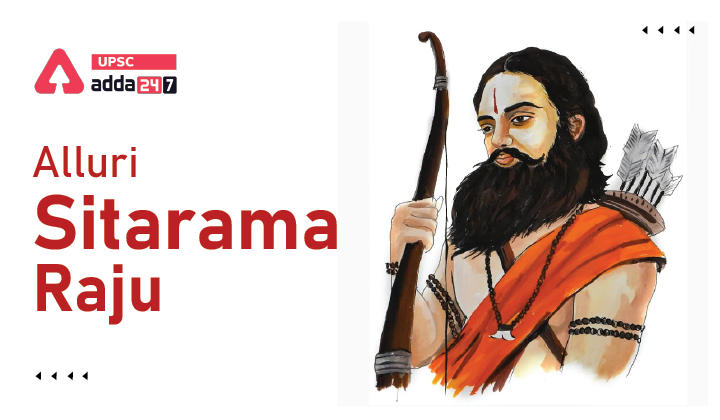Table of Contents
Alluri Sitarama Raju- Relevance for UPSC Exam
Alluri Sitarama Raju: Alluri Sitarama Raju is a celebrated tribal leader who fought against the British rulers. Alluri Sitarama Raju is important for UPSC Mains GS Paper 1 (Indian History- Modern Indian history from about the middle of the eighteenth century until the present- significant events, personalities, issues.)
Alluri Sitarama Raju in News
- Prime Minister Narendra Modi along with 37 members of freedom fighter Alluri Sitarama Raju’s family and the great grandsons of the tribal leaders will participate in the 125th birth anniversary celebrations of Alluri Sitarama Raju.
- The Prime Minister will unveil a 30-foot-tall bronze statue of Sitarama Raju at A.S.R. Nagar and attend a public meeting at Chinna Amiram village in West Godavari district.
Alluri Sitarama Raju
- About: Alluri Sitarama Raju is one of India’s revolutionary heroes whose guerilla tactics and daring attacks struck terror in the hearts of the British.
- He is revered across Andhra Pradesh, Telangana, Odisha and Karnataka as “Manyam Veerudu” or the “Hero of the Jungle”.
- Birth Anniversary: The fourth of July 2022 marks the 125th birth anniversary of Alluri Sitarama Raju which coincides with the Azadi Ka Amrit Mahotsav celebrations, commemorating the 75th year of Independence.
- Rama Raju was born on July 4, 1897, into a humble middle-class family in a small village near the Coastal city of Visakhapatnam.
- Early Life: After death of his father, Alluri Sitarama Raju went on a pilgrimage and toured the Western, North-Western, North and North-eastern India during his teens.
- The social-economic conditions in the country under the British regime, particularly in the tribal areas, deeply moved him.
- During these journeys, he met revolutionaries in Chittagong (now in Bangladesh).
Alluri Sitarama Raju Contribution to Freedom Struggle
- He made Adivasiareas in the Eastern Ghats (the forest area along the Visakhapatnam and Godavari district) his home.
- He decided to work for the Adivasis, who were living in abject poverty and being fleeced by police, forest and revenue officials, in ‘Manyam’(forest area).
- He started working amongst them and helped them by educating them and providing medical help, using the vast knowledge he gained from his extensive travels.
- He decided to make this area the hub for his fight against the British.
- He began to organiseAdivasis against the atrocities by the police, the forest and revenue officials and extensively toured the ‘Manyam’
- He told them that they were the sole owners of the forest produce and prepared them to fight against the oppressive Madras Forest Act, 1882.
- A slew of initial successes gave a lot of hope and confidence among the Adivasis and people in the surrounding villages and more and more of them began to rally behind Rama Raju.
Rampa Rebellion
- About: Rampa Rebellion was a tribal uprising against British was launched by Alluri Sitarama Raju in August 1922. It is also known as the Manyam Rebellion.
- Location: Rampa Rebellion happened in Godavari Agency of Madras Presidency, British India.
- Attacks and Method of Rebellion: The first attack under rampa rebellion was made on Chintapalli police station in Visakhapatnam Agency area on August 22, 1922, with over 300 revolutionaries under the leadership of Raju taking part in it.
- Subsequently, similar attacks were made on Krishnadevi Peta police station and Raja Ommangi police station. They snatched weapons and armoury in all such attacks.
- A large contingent of Reserve Police personnel from Visakhapatnam, Rajahmundry, Parvatipuram and Koraput were rushed to these areas led by British officers.
- Two of the officers – Scot and Heiter were killed in battles with revolutionaries on September 24, 1922, and several others wounded.
- End of Rampa Rebellion: The British Government had to spend over Rs 40 lakhs in those days to defeat the Manyam rebellion. It lasted until the capture and killing of Raju in May 1924.




 TSPSC Group 1 Question Paper 2024, Downl...
TSPSC Group 1 Question Paper 2024, Downl...
 TSPSC Group 1 Answer key 2024 Out, Downl...
TSPSC Group 1 Answer key 2024 Out, Downl...
 UPSC Prelims 2024 Question Paper, Downlo...
UPSC Prelims 2024 Question Paper, Downlo...
